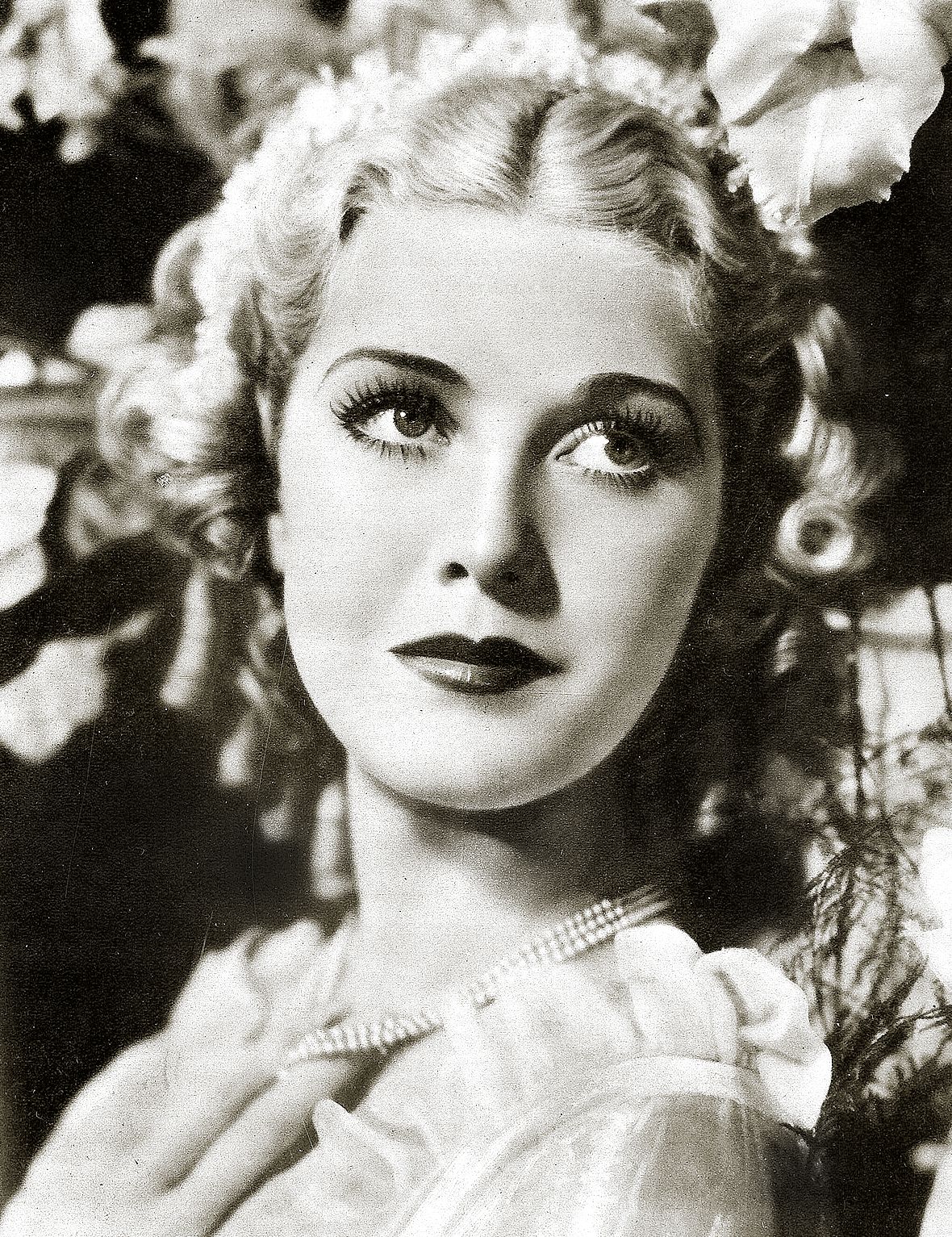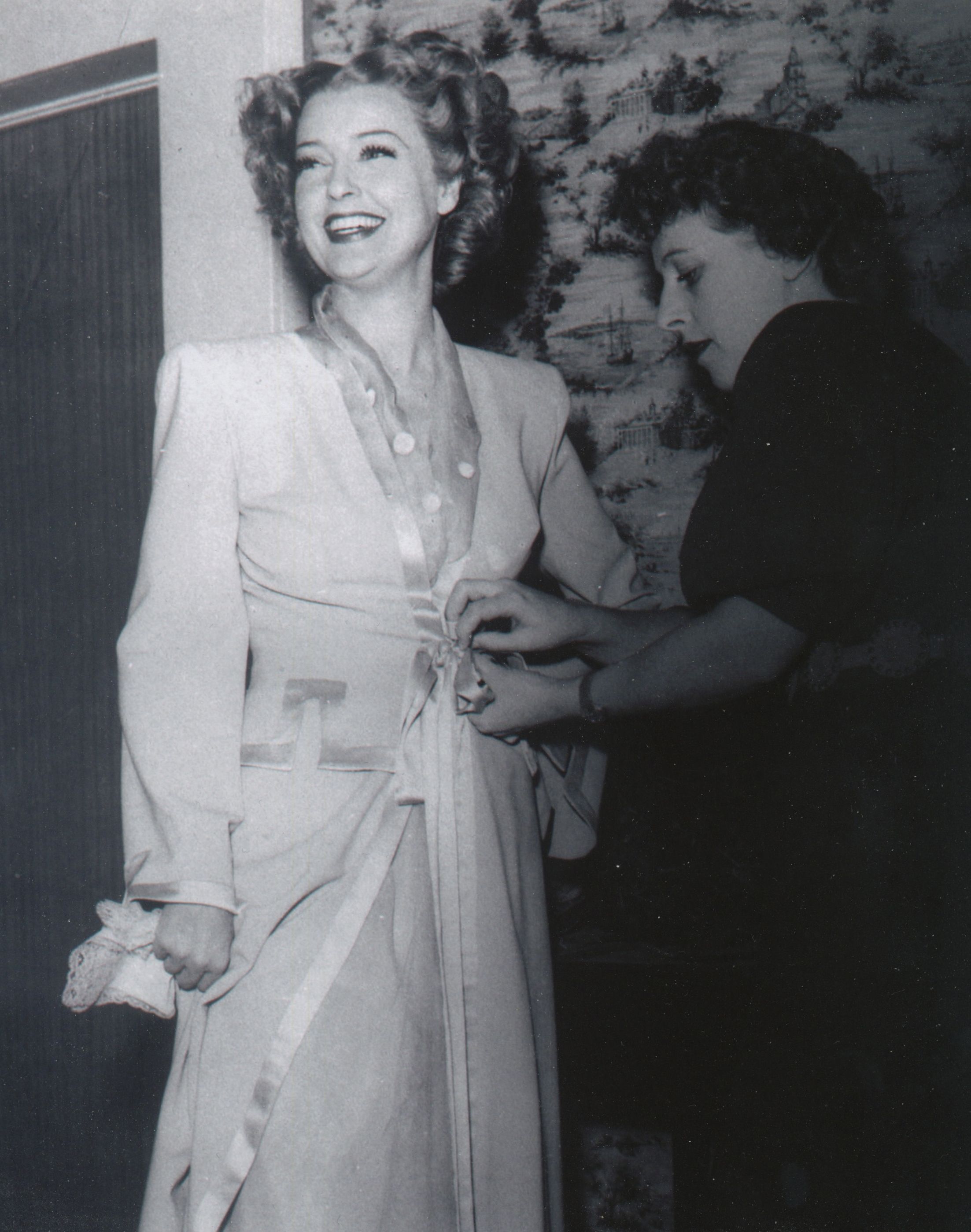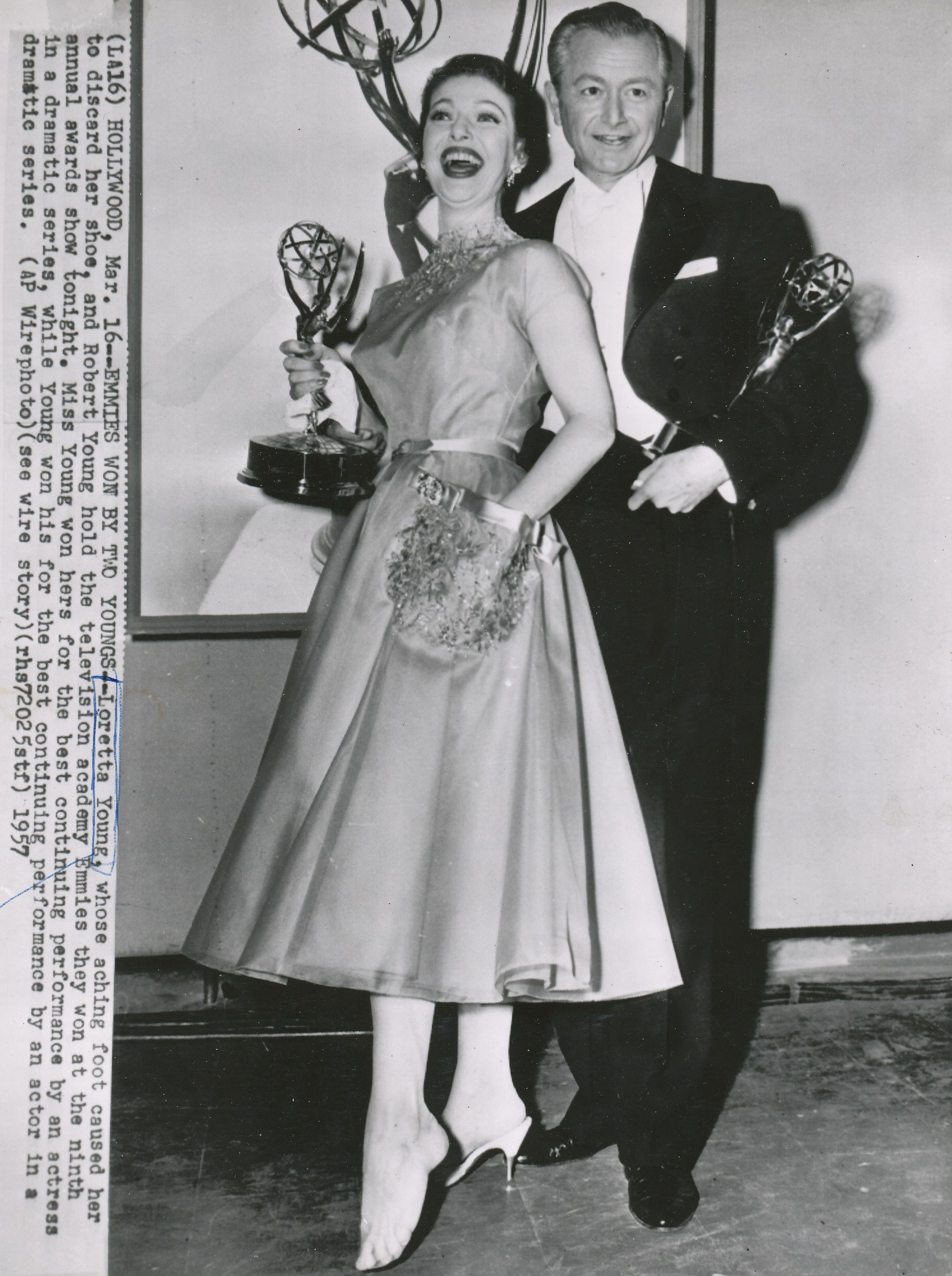Polly Ann Young: Unveiling A Hollywood Sister's Legacy
In the glittering, often ephemeral world of early Hollywood, where stars were born and faded with dizzying speed, the Young sisters carved out a unique place. While her younger siblings, Loretta Young and Sally Blane, achieved greater fame, it was Polly Ann Young who first stepped into the spotlight, laying the groundwork for a family dynasty in cinema. Her story, though less heralded, offers a fascinating glimpse into the life of a working actress during a pivotal era of filmmaking, a narrative of talent, dedication, and the quiet choices that shape a life.
Born into a family that would eventually produce three notable actresses, Polly Ann Young's journey in film spanned over two decades, featuring in dozens of movies. From her early beginnings as the eldest of the talented Young siblings to her eventual retirement from the silver screen, her career, though often in supporting or uncredited roles, was an integral part of Hollywood's golden age tapestry. This article delves into the life and career of Polly Ann Young, exploring her contributions to cinema, her place within her famous family, and the legacy she left behind.
Table of Contents
- Polly Ann Young: A Biographical Sketch
- Early Life and Family Roots
- Stepping into the Spotlight: Hollywood Debut
- A Career Forged in Film: Roles and Genres
- Notable Performances of Polly Ann Young
- The Young Sisters: A Hollywood Dynasty
- Retirement and Personal Life
- Polly Ann Young's Enduring Legacy
Polly Ann Young: A Biographical Sketch
Polly Ann Young, an American actress, carved out a niche for herself in Hollywood during the early 20th century. While perhaps not as widely recognized as her younger sisters, Loretta Young and Sally Blane, Polly Ann's career was significant, contributing to the burgeoning film industry from the silent era into the talkies. Her story is one of dedication to her craft, navigating the complexities of a rapidly evolving industry, and making her mark in a competitive environment.
- Iran Hostage Crisis Carter
- Sextube Iran
- Iran Sex Free
- Sights In Iran
- Iran And United States Nuclear Deal
Personal Data and Biodata: Polly Ann Young
| Attribute | Detail |
|---|---|
| Full Name | Polly Ann Young |
| Date of Birth | October 25, 1908 |
| Place of Birth | Denver, Colorado, USA (also cited as Salida, Chaffee, Colorado, United States) |
| Parents | John Earl Mendell Young (Father), Gladys Royal (Mother) |
| Siblings | Loretta Young (Sister), Sally Blane (Sister) |
| Occupation | Actress |
| Active Years | 1917 – 1941 |
| Number of Films | Featured in 34 movies (some uncredited), with some sources citing over 40 movies. |
| Spouse | Carter Hermann |
| Known For | The Man from Utah (1934), Invisible Ghost (1941), The Last Alarm, Road Show, The Story of Alexander Graham Bell. |
| Retirement | Retired in 1941 for marriage. |
Early Life and Family Roots
Polly Ann Young's journey began on October 25, 1908. While some records indicate her birth in Salida, Chaffee, Colorado, United States, other prominent sources state she was born in Denver, Colorado, USA. This slight discrepancy in birth location is not uncommon for historical figures, but what is clear is her Colorado origins. At the time of her birth, her father, John Earl Mendell Young, was 25 years old, and her mother, Gladys Royal, was 20. This young couple would go on to raise a family that would leave an indelible mark on Hollywood.
Polly Ann was the eldest of what would become the famous Young sisters, a trio of actresses who graced the silver screen. Her younger sisters, Loretta Young (born Gretchen Young) and Sally Blane (born Elizabeth Jane Young), would follow in her footsteps, eventually surpassing her in terms of star power and longevity in the industry. However, it was Polly Ann who, as the trailblazer, first ventured into the demanding world of motion pictures, setting a precedent for her siblings and perhaps inspiring their own aspirations.
Stepping into the Spotlight: Hollywood Debut
The precise circumstances of Polly Ann Young's entry into Hollywood are not extensively documented, but it's understood that her family's eventual move to Los Angeles played a crucial role. The lure of the burgeoning film industry was strong, and for a young woman with natural charm and a striking presence, opportunities were abundant. She began her acting career remarkably early, with her first credited roles appearing around 1917. This means she was still a child when she started, a common occurrence in the early days of cinema where formal training was less emphasized than raw talent and availability.
- Iran Shoots Missiles Into Israel
- Selecci%C3%A3n De F%C3%A3%C2%BAtbol De Ir%C3%A3n
- Iran In The Bible Prophecy
- Iran Miss Universe
- Iran Turkish Airlines
Her early career would have coincided with the tail end of the silent film era and the revolutionary transition to sound. This period was dynamic and challenging, requiring actors to adapt quickly to new technologies and performance styles. Polly Ann Young navigated this transition, demonstrating her versatility and resilience in an industry that was constantly reinventing itself. Her initial roles, like many aspiring actors, were likely minor, uncredited appearances, allowing her to gain experience and exposure within the studio system.
A Career Forged in Film: Roles and Genres
Between 1917 and 1941, Polly Ann Young featured in a significant number of films. While some sources state she appeared in 34 movies, others claim over 40, with a consistent note that many of these were minor or uncredited roles. This volume of work speaks to her consistent employment in Hollywood, even if she didn't always receive top billing. She established herself as a "minor leading lady," a term often used to describe actresses who frequently played significant, but not always central, roles, often in B-movies or supporting capacities in larger productions.
The World of Uncredited Roles
The prevalence of "uncredited roles" in Polly Ann Young's filmography highlights a common practice in early Hollywood. In an era before standardized contracts and union protections were fully established, actors often took on small parts without receiving screen credit. This could be due to the brevity of the role, the actor's status, or simply the studio's discretion. For a working actress like Polly Ann Young, these roles were a means of gaining experience, maintaining visibility, and earning a living. While they didn't contribute to star status, they were vital for the functioning of the studio system, providing a steady stream of talent for various productions, from crowd scenes to brief speaking parts.
Versatility in Westerns and Action Adventures
Polly Ann Young's filmography indicates a particular specialization in certain genres. She frequently appeared in westerns and action adventures. These genres were immensely popular during the 1930s, offering escapism and thrilling narratives to audiences. For actresses, roles in westerns often involved playing the strong-willed heroine, the love interest, or the damsel in distress. Her presence in these films suggests a physical aptitude and a screen presence suitable for dynamic storytelling. Her ability to consistently secure roles in these popular genres further underscores her reliability as a performer and her understanding of the industry's demands.
Notable Performances of Polly Ann Young
While many of Polly Ann Young's roles were in smaller productions or uncredited, several films stand out as significant highlights of her career. These roles allowed her to showcase her acting abilities and left a more lasting impression on audiences and critics. Among her most notable movie roles was her appearance in:
- The Man from Utah (1934): This Western film is frequently cited as one of her more prominent roles. Starring alongside legendary cowboy actor John Wayne, Polly Ann Young would have played a key female character, a common role for "minor leading ladies" in this popular genre. These films were often fast-paced and action-packed, requiring actors to be adept at both dramatic scenes and physical performance.
- Invisible Ghost (1941): This horror film, released towards the end of her career, provided a different kind of role. Starring Bela Lugosi, a horror icon, the film would have placed Polly Ann in a suspenseful and potentially more complex narrative, showcasing her range beyond Westerns.
- The Last Alarm: While specific details about her role are less common, this film is consistently mentioned among her known works, indicating its significance in her filmography.
- Port of Hate (1939): Another film from the later part of her career, this movie likely saw her in a dramatic or adventurous role, fitting her established genre preferences.
- Turnabout (1940): This film also appears in lists of her known works, suggesting a continued presence in various productions leading up to her retirement.
- The Story of Alexander Graham Bell: Appearing in a biographical drama like this suggests her versatility and ability to perform in more serious, prestige productions, even if her role was minor.
- Road Show: One of her last films, this production indicates her continued work ethic and presence in the industry right up until her retirement.
These films, spanning different genres and production scales, collectively illustrate the breadth of Polly Ann Young's work and her consistent presence in Hollywood throughout the 1920s and 1930s.
The Young Sisters: A Hollywood Dynasty
The story of Polly Ann Young is intrinsically linked to her sisters, Loretta Young and Sally Blane. Actresses Loretta Young and Sally Blane were her sisters, forming a unique sibling trio in Hollywood. Of the three, Polly Ann was the eldest, and perhaps, the least successful in terms of achieving widespread stardom and critical acclaim. This is not to diminish her contributions but rather to highlight the immense success of her younger sister, Loretta Young, who became an Oscar-winning icon.
The presence of three sisters in the same highly competitive industry is remarkable. It suggests a shared talent, a supportive family environment (or perhaps a competitive one, depending on individual personalities), and a collective ambition to make a mark in cinema. While Loretta Young soared to leading lady status, Polly Ann Young and Sally Blane carved out respectable careers as reliable supporting actresses and minor leading ladies. Their careers often overlapped, and they would have navigated the same studios, casting calls, and industry pressures. This familial connection undoubtedly opened some doors, but each sister still had to prove her own merit on screen.
Retirement and Personal Life
Polly Ann Young's career came to a close in 1941. Her last films were “Road Show” and “Invisible Ghost,” marking the end of her active period in front of the camera. Her retirement was not due to a decline in opportunities or a fading of talent, but rather a personal choice: she retired for marriage. This decision was a common trajectory for many actresses of that era. In a time when societal expectations often prioritized domestic life for women, especially after marriage, it was not unusual for female stars, even prominent ones, to step away from their careers to focus on their families.
Marriage and Life Beyond the Screen
Polly Ann Young was married to Carter Hermann. While details of their life together are not extensively publicized, her decision to retire for marriage suggests a desire for a life away from the demanding schedule and public scrutiny of Hollywood. For many actresses, marriage offered stability and a different kind of fulfillment that the transient nature of film careers often could not provide. Her departure from the screen in 1941 marked the end of a significant chapter, but it ushered in a new phase of her life, one presumably centered on her family and personal pursuits. Her choice reflects a common narrative for women in Hollywood during that period, where personal happiness often took precedence over professional ambition, especially after finding a life partner.
Polly Ann Young's Enduring Legacy
While Polly Ann Young may not possess the household name recognition of her sister Loretta, her contribution to Hollywood is nonetheless significant. Her career, spanning from 1917 to 1941, offers a valuable case study of a working actress in the early studio system. She was a consistent presence, a reliable performer who contributed to dozens of films, many of which are now considered historical artifacts of cinema. Her roles in Westerns and action adventures helped shape the popular genres of the era, and her ability to adapt from silent films to talkies speaks volumes about her talent and professionalism.
Polly Ann Young's story reminds us that Hollywood's golden age was built not just on the shoulders of its biggest stars, but also on the tireless work of actors like her – the "minor leading ladies" and supporting players who filled out casts, brought characters to life, and ensured the continuous flow of cinematic output. Her legacy is one of quiet dedication, a testament to the everyday grind of acting, and a vital piece of the intricate puzzle that was early 20th-century American cinema. She was an integral part of a remarkable family, the eldest sister who paved the way, and her career, though less celebrated, stands as a testament to her enduring presence in film history.
Her life also offers a glimpse into the societal norms of the time, particularly regarding women's careers and marriage. Her choice to retire for marriage in 1941 was a common one, reflecting a period where domesticity was often seen as the ultimate fulfillment for women. This aspect of her life, alongside her professional achievements, paints a complete picture of Polly Ann Young, not just as an actress, but as a woman navigating the expectations and opportunities of her time.
Ultimately, Polly Ann Young's story is a compelling one, offering valuable insights into the multifaceted world of early Hollywood. It encourages us to look beyond the brightest stars and appreciate the vast constellation of talent that truly made the industry shine. Her work, though often in the background, was essential, and her place in film history is firmly secured as a dedicated and versatile actress.
Conclusion
Polly Ann Young's career, spanning over two decades and encompassing dozens of films, is a testament to her dedication as an actress in early Hollywood. As the eldest of the talented Young sisters, she forged her own path, contributing to the industry as a reliable minor leading lady in westerns, action adventures, and various other productions. While her younger sisters achieved greater fame, Polly Ann Young's consistent work, adaptability from silent to sound films, and her presence in significant genre pictures solidified her place in cinematic history.
Her story is a reminder that the magic of Hollywood was built not only by its glittering stars but also by the steadfast professionals who filled crucial roles, often without widespread recognition. Polly Ann Young's journey, from her birth in Colorado to her retirement for marriage in 1941, offers a rich narrative of a life lived within the heart of the burgeoning film industry. We hope this deep dive into her life has provided you with a newfound appreciation for her contributions.
Did you learn something new about Polly Ann Young? Share your thoughts in the comments below! If you're interested in exploring more unsung heroes of classic cinema, be sure to check out our other articles on Hollywood's pioneering figures.
- Iran Basketball League
- When Did The Iraq Iran War Start
- Parsian Evin Hotel Tehran Iran
- Old Name Of Iran And Iraq
- Is Gaza In Iran

Pictures of Polly Ann Young

Pictures of Polly Ann Young

Pictures of Polly Ann Young